The Box and Stuff -
The box for the 5870 Stalker COP edition is something of a giveaway. When you pick it up the graphic on the front, while very well done, lends itself to no other game that we know of except maybe Metro 2033 (after all they use an almost identical engine). But if the graphic does not do it, then the Stalker COP logo in the corner (with ‘Asus Exclusive’ over it) will. Of course it would not be a component if it did not have all the latest badges and logos denoting what it works with and the features it has. Of special note is the Overclock 868MHz; this may prove to hurt us later as we try to push the card faster.
 |
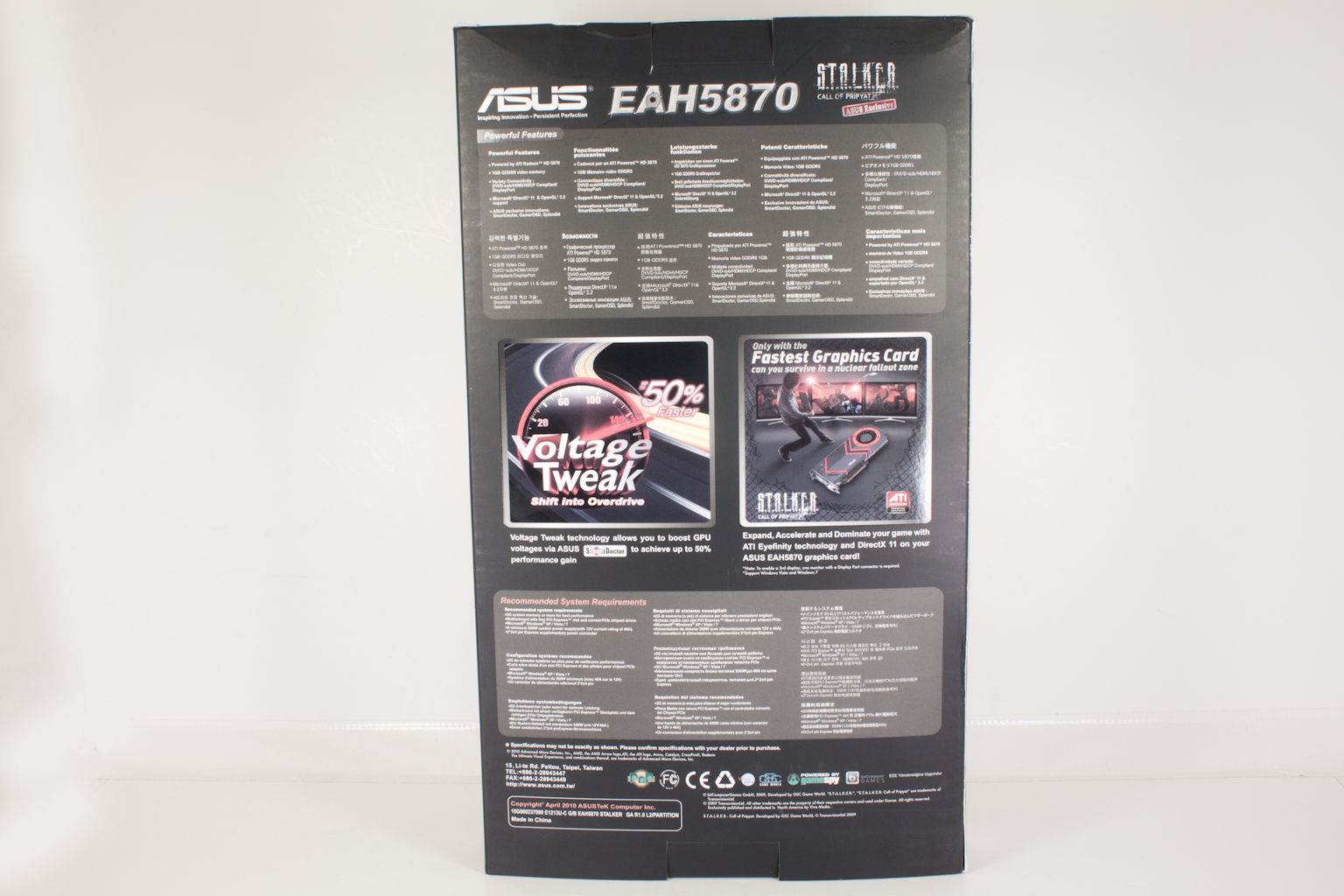 |
The back of the box is really only more features and specs. There are two images around the middle, only one of which is really worth noting. This is the Voltage Tweak image. It lets us know this card can have its voltage adjusted for better overclocking; maybe that 868MHz factory OC won’t be a problem after all.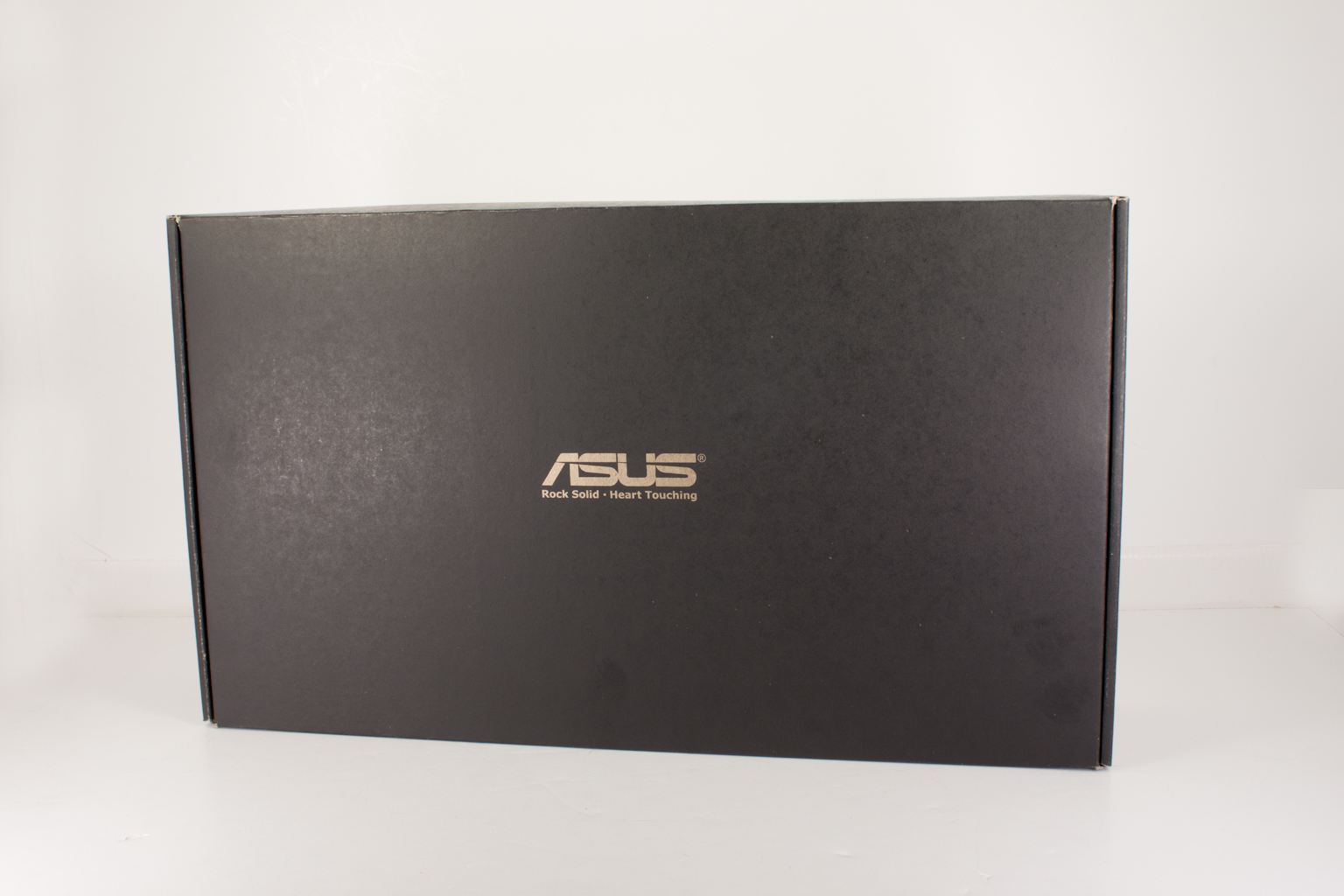
Inside the outer shell (the one with all the color and imagery) we find a plain, almost elegant black box.
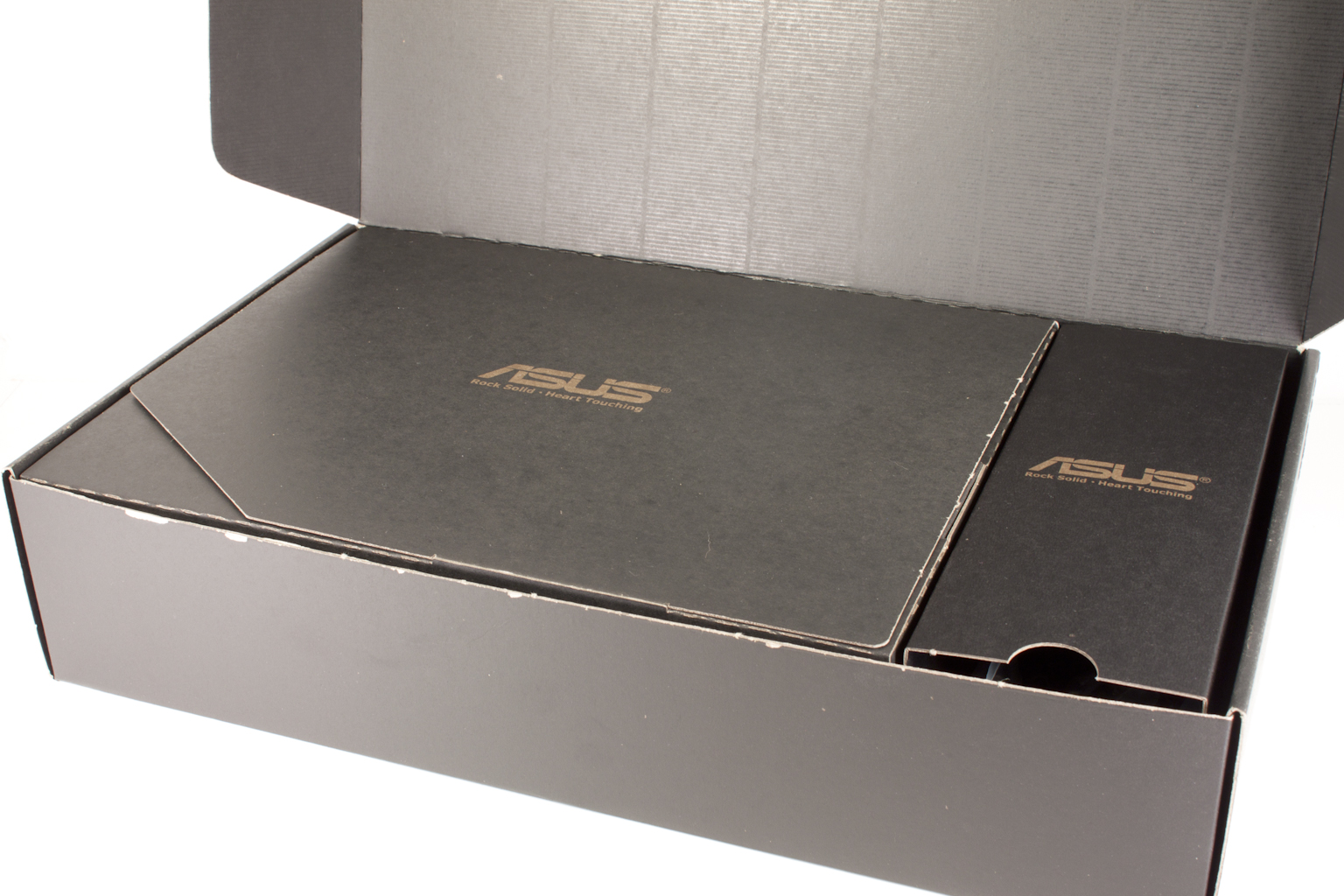 |
 |
As you might have guessed there are additional boxes inside the larger one (this is getting repetitive, this is getting repetitive). The smaller flat box holds all of the drivers/utilities DVDs, manuals and the Stalker COP special offer card. The larger one has all of the adapters (DVI to HDMI, PCIe power, etc.). It is a pretty decent haul when you think about it. 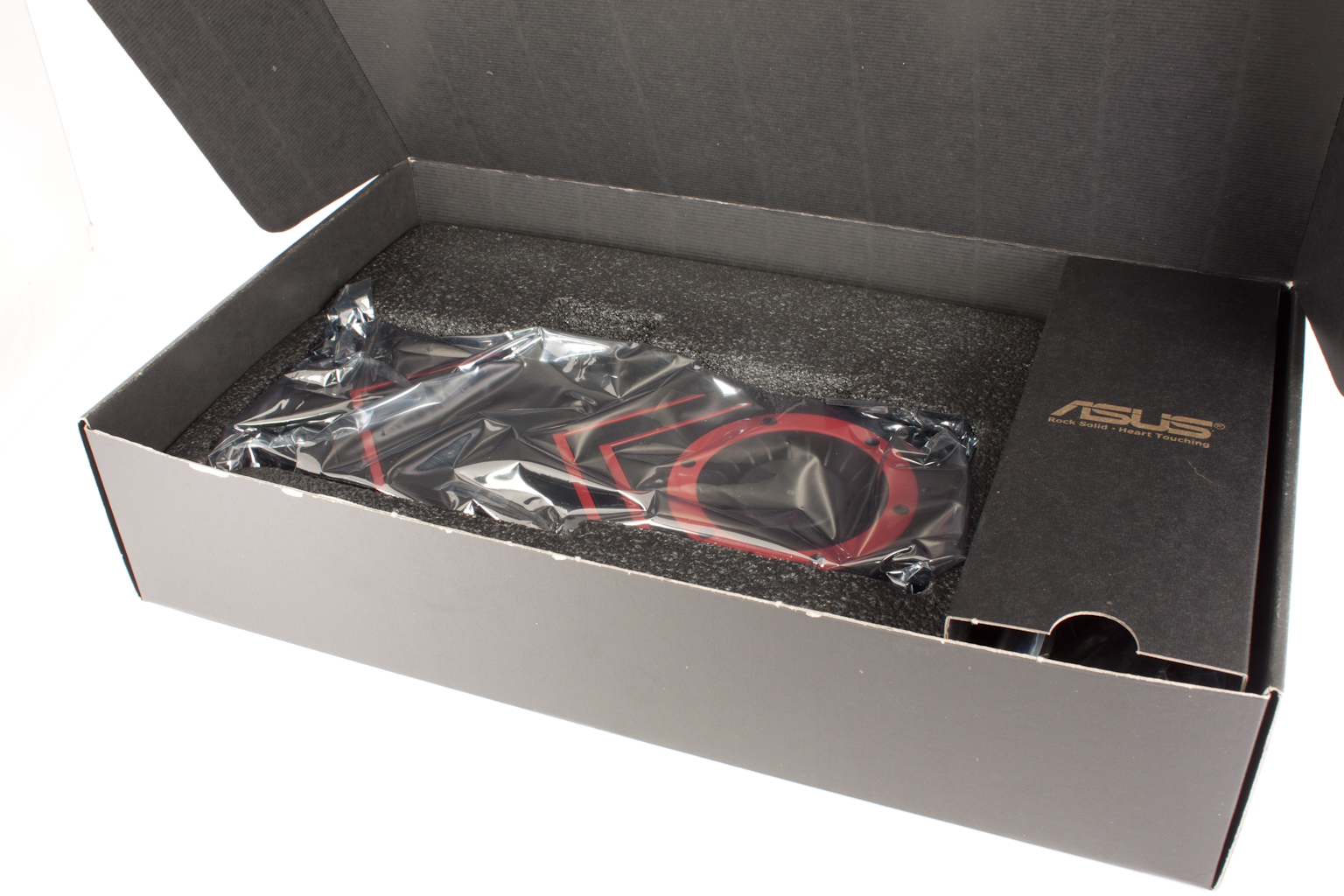
Underneath the flat box we find the EAH5870 V2; now that is what we have all come to see.
The Asus EAH 5870 S.T.A.L.K.E.R. Call of Pripyat Edition -
You can tell right away that the EAH5870 Stalker COP edition GPU is not a reference model; if for no other reason than the cooling system. Just looking at the cooling on top of the card and you get an impression of speed. It looks like a high-performance automotive part.
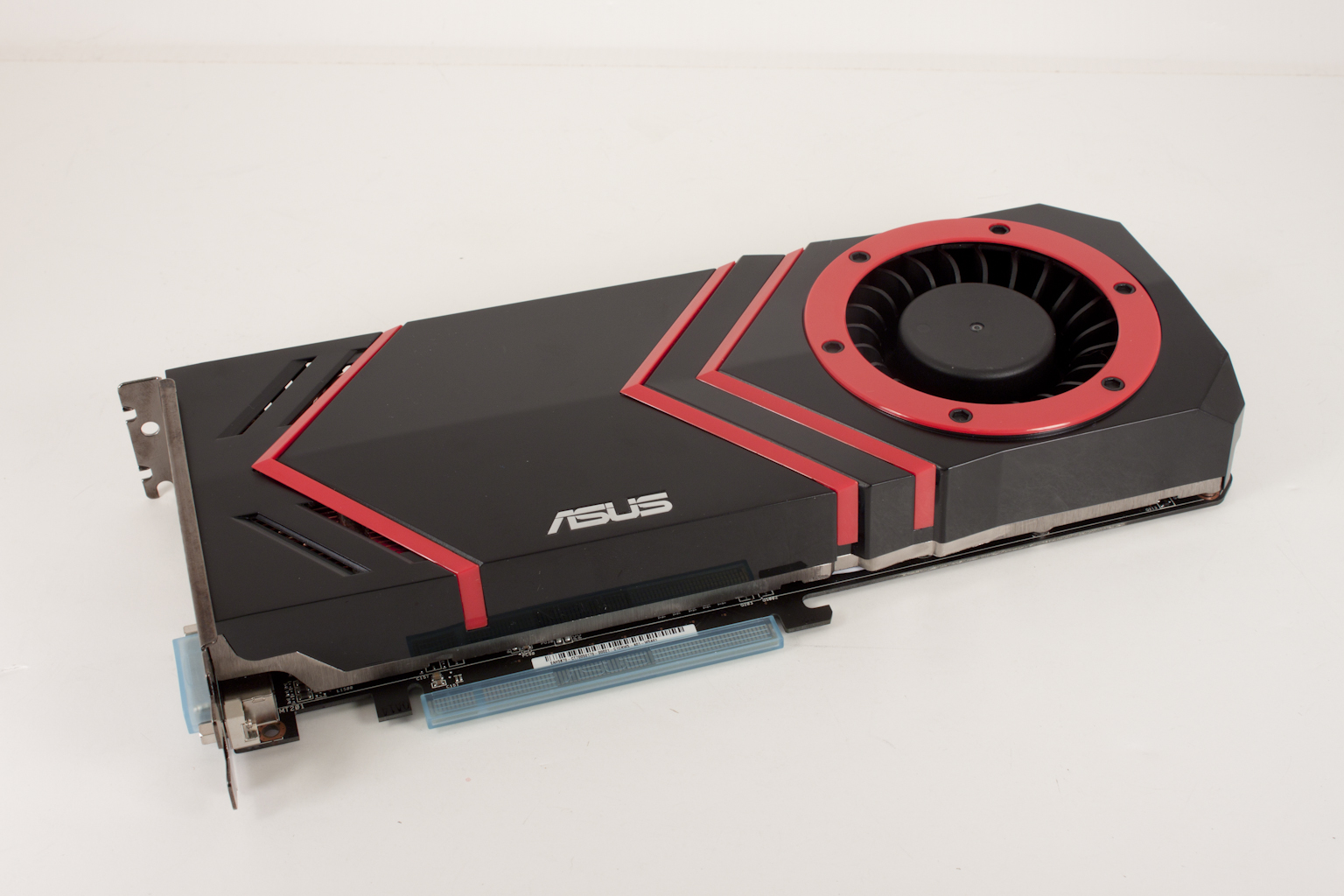 |
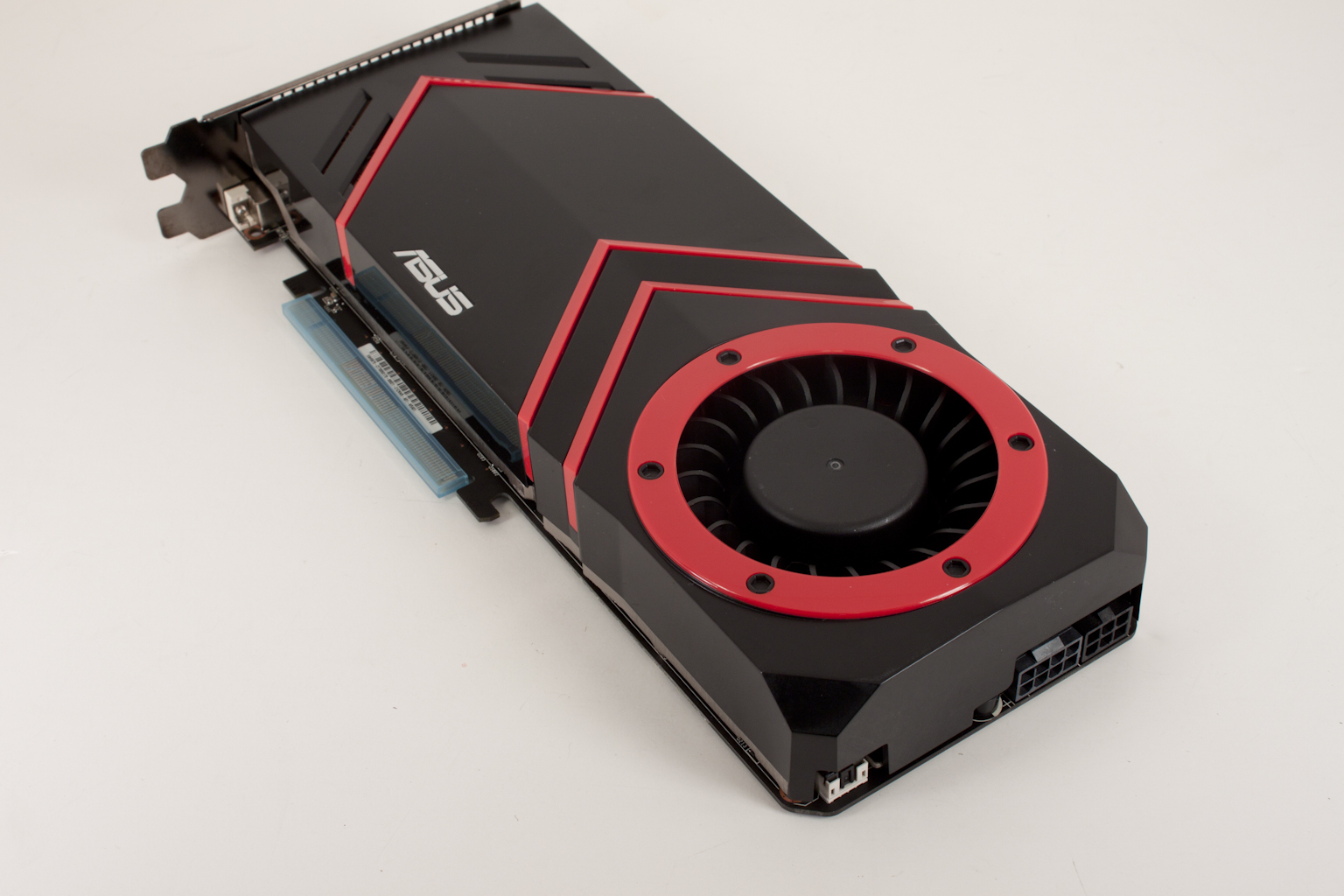 |
Looking at the tail end we find even more evidence of this add-in board’s departure from the mundane world of the reference HD5870. The PCIe power connectors have been moved from the top to the back and instead of the normal two six-pin headers there is an eight-pin and a six-pin. We can also see that the PCB itself has the corners chopped at 45-degree angles.
Flipping around to the front we find the normal number of ports for most 5870s in DVI, one HDMI and one Display port. Turning the card over to look at the bottom we find that the layout of the PCB is certainly different from what we are used to. The EAH5870 follows some of the traditional layout but the way the VRMs and chokes are laid out looks very different from what we have seen.
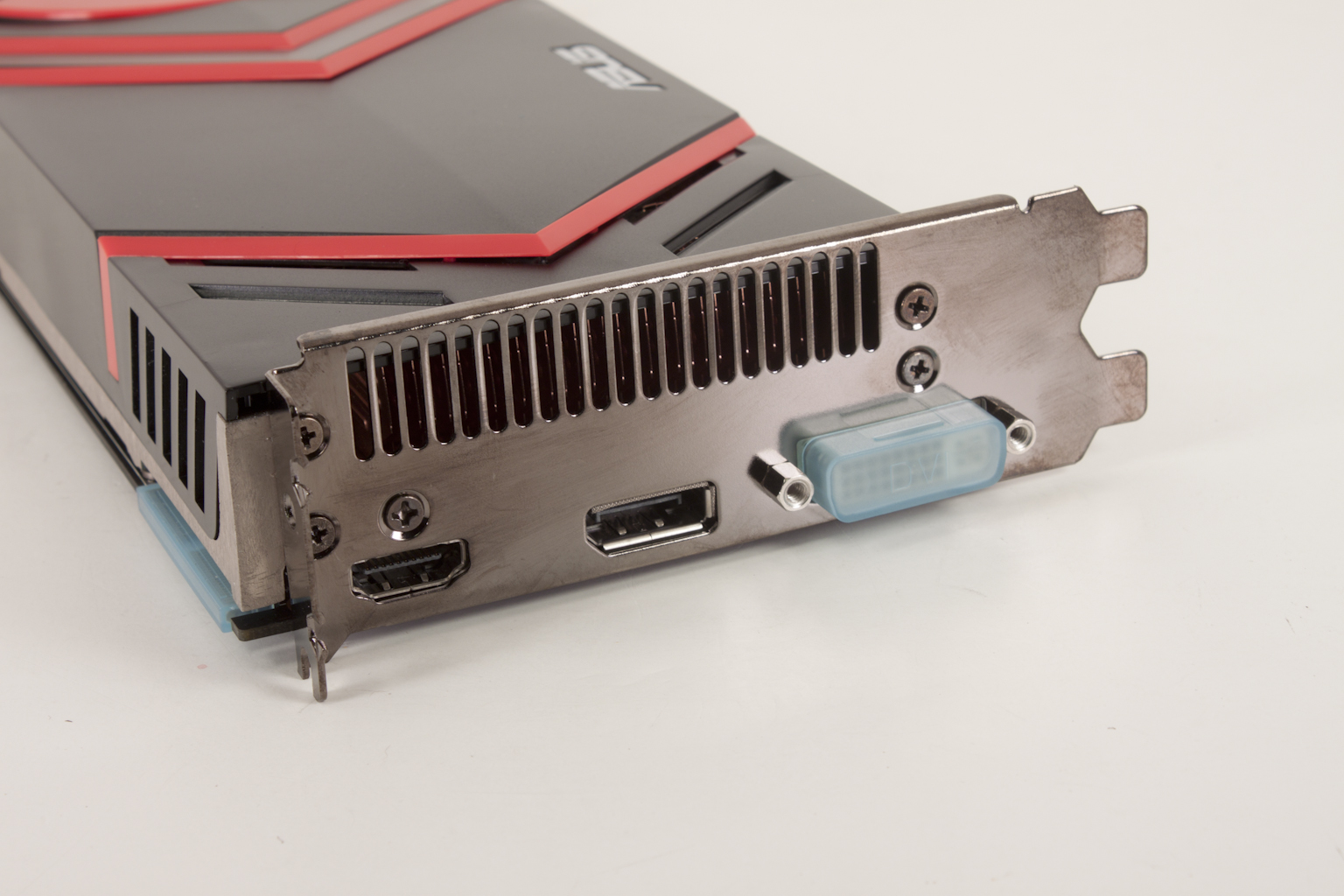 |
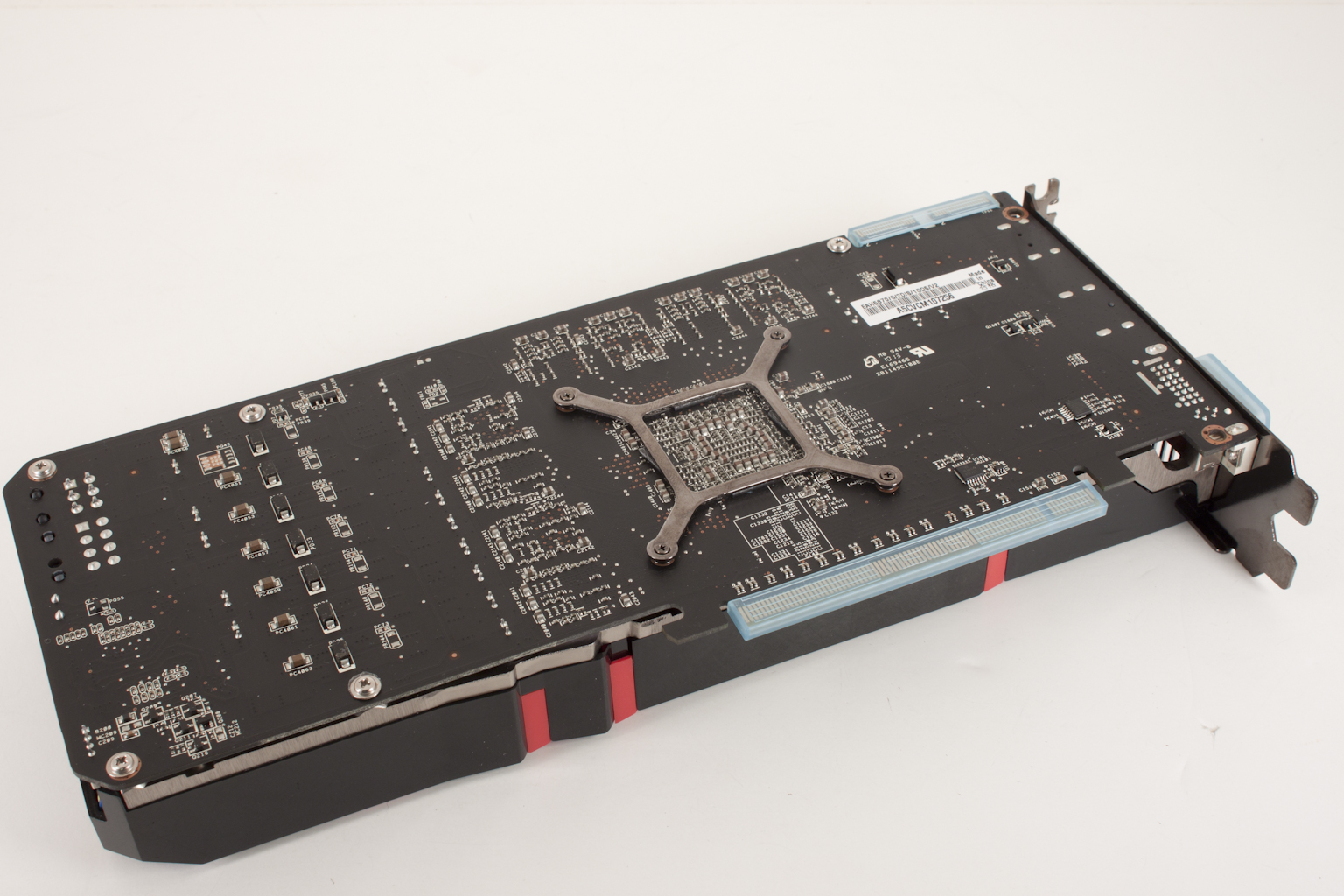 |
To find out if our suspicions were correct we stripped off the cooling and took a look at the PCB. As you can see there is the Asus brand name, making this most certainly an Asus creation. Next we focused in on what we really wanted to know, and there it all is. The EAH5870 V2 has some serious power regulation. It looks like the claims on the box are not baseless or bragging. Asus has certainly set this GPU up to be pushed.
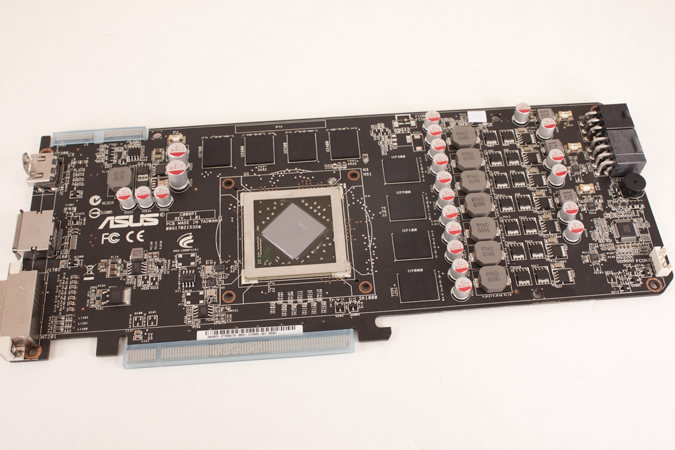 |
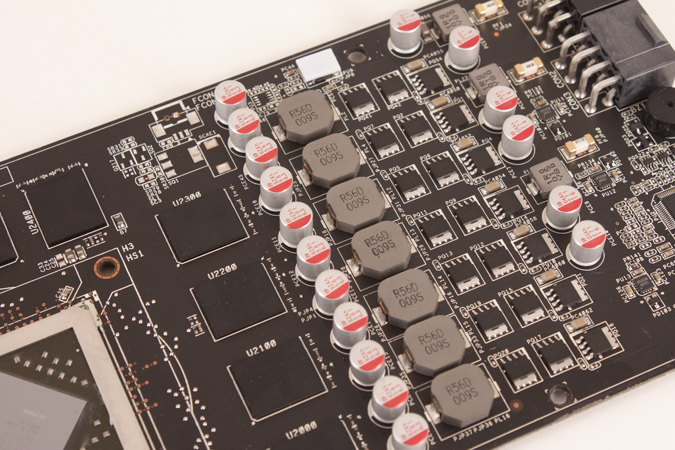 |
Looking at the cooling side of things it does look like Asus has increased the size of the fan that pulls in air to keep things cool. This is a good thing as Asus fully expects you to push more voltage into this GPU to get the higher clocks.
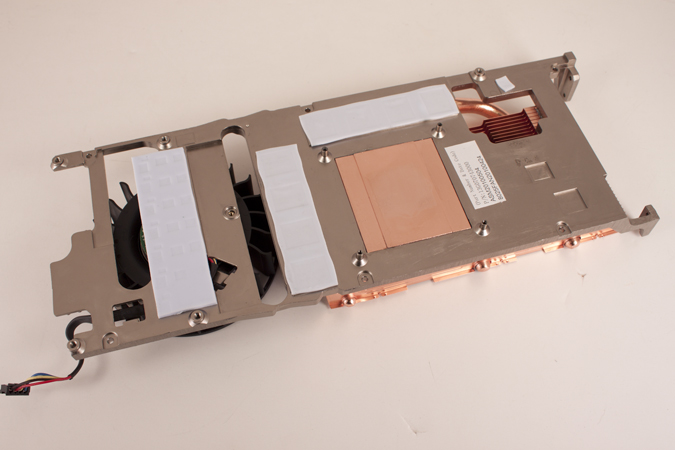 |
 |



